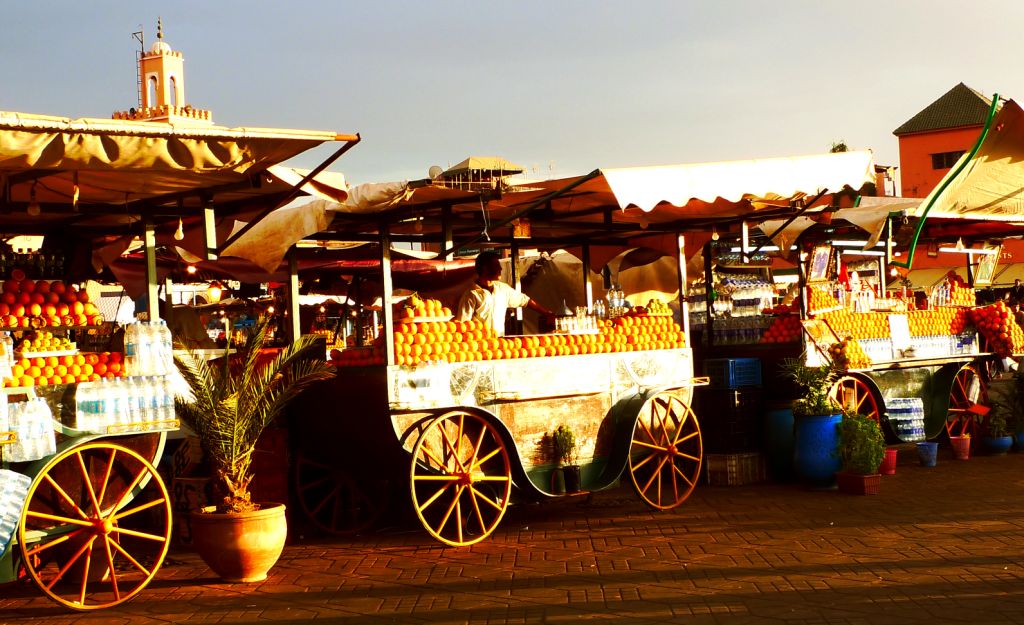Most of the places in the city you just cannot miss visiting are enclosed within the three walls of the old medina. The pulsating heart of the city is Jmaa el Fna Square, declared a masterpiece of oral and intangible heritage by the UNESCO, highlighted by its vibrant hubbub at dusk.
Another symbol of the city is the Koutubia, erected in the 12th century, by the Almohads and acting as a model for the Hassan Tower in Rabat and the Giralda in Seville. The third point of interest is the lively Souks, the epicentre of commerce in the Medina and where bartering becomes a must. Nestled among the souks is the charming little square of Rahba Kedima, the ancient slave market, and if we walk deeper into the souks quarter we reach the medersa Ben Youssef, the Quran school.
Inside the medina, the only of remains of its dominance are in front of the Koubba Almoravid, located next to the M’Nebhi Palace, which holds the Museum of Marrakech. In this part of the city you will find two of the more than sixty fountains that, until the 1950s, supplied fresh water from the Atlas Mountains to the medina: the Mouassine Fountain, next to the mosque of the same name and the Chrob ou Chouf Fountain.
Once we have crossed the famous gate of Bab Agnaou and we find ourselves in the Kasbbah district, we reach the Saadian Tombs, which shelter the mausoleums from the dynasty between the 14th and 16th century, located not very far from the magnificent ruins of the El Badi Palace. Next to the gate of Bab Berima, which leads to La Mellah, the Jewish quarters, we discover the picturesque Spice Souk and, if we go a bit further, we come to the Bahia Palace surrounded by its gardens and the Dar Si Said and Dar Tiskiwin Museums, which exhibit Moroccan and Beber art, respectively.
One of the symbols of Marrakech is outside the Medina and makes you feel in the mood for taking a carriage ride at dusk. This beautiful sight is the Menara Pavilion and Gardens. Other important gardens are the Majorelle Gardens, with the Museum of Islamic Art and, of course, we mustn’t forget the Palmeral. The twenty kilometres of ramparts and some of their nineteen gates are worth visiting separately.
If we’re in the mood to feel the atmosphere of a popular street market, then we can’t miss the one that is set up every morning in the area around Bab Doukala, selling all types of farm products, and on Thursday mornings, in Bab EL Khemish, there is a colourful cattle market, as well as the permanently covered souk, where you can find antiques and handicrafts. Another place where you can purchase handicrafts is from the Marrakech Handicrafts Complex, located on Mohammed V Avenue, next to the Town Hall.
The most adventurous travellers don’t have to visit the city in a traditional carriage; they can choose to fly over the city in a hot air balloon, which will present them with a totally different view of Marrakech.
If you would like more information, or you have any other queries about the city or the country, the Morocco Tourism Website will help you plan your trip well in advance.


